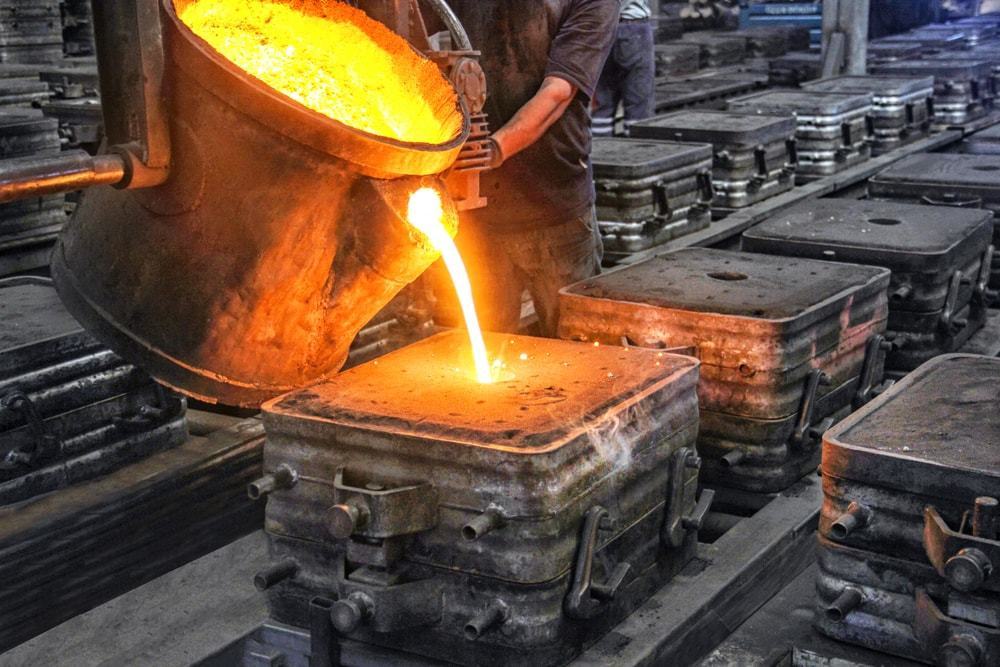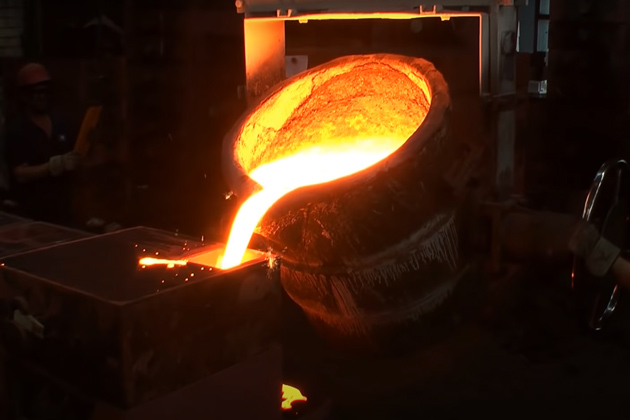The ultimate guide to sustainability practices in the Metal Foundry industry
Discover the Ingenious Methods Made Use Of in a Metal Foundry for Superior Casting Results
In today's affordable manufacturing landscape, metal foundries are increasingly embracing innovative strategies to improve casting results - Aluminum Foundry. Advanced computer simulations permit precise modeling of liquified metal actions, while 3D printing makes it possible for quick manufacturing of complex mold and mildews. In addition, eco-friendly materials and automation simplify operations. These advancements assure considerable improvements in effectiveness and quality assurance. The influence of these modern technologies on sustainability and manufacturing practices remains to be fully discovered.
Advanced Computer Simulations in Metal Casting
Advanced computer system simulations have changed the metal spreading process by improving precision and efficiency. These advanced devices enable designers to create virtual models of actors elements, enabling them to evaluate and predict the behavior of liquified metal throughout the casting stage. By mimicing different specifications such as temperature level, flow price, and cooling rates, manufacturers can determine possible flaws before physical production starts.
This proactive approach reduces waste and lessens pricey errors, inevitably resulting in improved item high quality. Additionally, simulations help with the optimization of mold and mildew layouts, guaranteeing that they satisfy the particular requirements of each project. The combination of computational liquid dynamics (CFD) and limited element analysis (FEA) more adds to the accuracy of these simulations, supplying understandings that were previously unattainable. Consequently, progressed computer system simulations have actually become an indispensable part of modern metal foundries, considerably progressing the sector's abilities.
3D Printing for Mold And Mildews and Patterns
3D printing has actually become a groundbreaking method for producing molds and patterns in the metal foundry market. This technology allows the quick manufacturing of intricate geometries that standard manufacturing methods battle to attain. By making use of additive production, foundries can produce elaborate layouts with decreased preparations and product waste. The ability to create mold and mildews on need permits for better flexibility in layout versions, facilitating faster prototyping and modifications.
3D printing can utilize a selection of materials, including metals and plastics, tailored to details casting requirements. This flexibility improves the accuracy of mold and mildews, resulting in superior spreading end results with improved surface finishes. In addition, the decrease in the number of components required streamlines assembly processes, further enhancing production performance. As foundries remain to embrace 3D printing, they are poised to redefine industry standards, leading the way for development and enhanced performance in metal spreading procedures.
Eco-Friendly Products and Processes
As the metal foundry market encounters increasing pressure to minimize its environmental footprint, the adoption of environment-friendly products and procedures has actually become vital. Foundries are currently checking out lasting alternatives to conventional products, such as utilizing bio-based binders and recycled steels. These materials not just reduce waste yet likewise reduced power consumption throughout manufacturing.
Furthermore, advancements in sand casting methods have actually resulted in making use of artificial sands that are much less harmful to the atmosphere. Shops are likewise carrying out cutting-edge procedures like molten metal therapy that lowers exhausts and boosts the quality of actors products.
Moreover, water-based layers have actually replaced poisonous solvents, promoting a much safer workplace (Metal Casting). By integrating these eco-friendly techniques, metal foundries can considerably lower their ecological effect while preserving high-quality spreading outcomes. This shift not only benefits the setting however likewise straightens with the expanding customer need for lasting manufacturing options
Automation and Robotics in Foundry Operations
While the metal foundry market accepts development, the assimilation of automation and robotics is changing operations considerably. Automated systems improve procedures such as mold look these up making, metal putting, and casting completing, considerably improving efficiency. Robotics help with the handling of heavy products, minimizing the threat of office injuries and making sure more secure environments.

Better, using automated directed automobiles (AGVs) maximizes product transport within centers, ensuring prompt distribution of elements to suitable workstations. By carrying out these innovations, foundries can adjust to changing demands with greater dexterity, inevitably causing improved success and competition in the market. As automation and robotics remain to evolve, they hold the prospective to redefine typical foundry methods and drive further innovations in casting techniques.
Real-Time Tracking and Quality Assurance Techniques
The innovations in automation and robotics have led the method for a lot more sophisticated techniques to quality control in metal foundries. Real-time monitoring systems utilize innovative sensors and information analytics to track vital criteria throughout the spreading procedure. These systems continuously assess variables such as product, temperature level, and pressure make-up, allowing instant discovery of inconsistencies from established standards.
Quality control techniques now include artificial intelligence formulas that examine historic data to anticipate potential flaws before they occur. This proactive strategy minimizes waste and improves general production performance. In addition, integrated comments loops permit fast adjustments, guaranteeing that each casting fulfills rigid top quality needs.
The execution of electronic twins-- virtual reproductions of physical assets-- has actually additionally reinvented top quality assurance, permitting designers to mimic hop over to here and optimize procedures in real-time. With each other, these cutting-edge techniques substantially boost the reliability and high quality of spreadings, setting brand-new sector standards in metal foundry operations.
Regularly Asked Concerns
What Sorts of Metals Are Commonly Cast in Shops?
Typically cast steels in foundries include light weight aluminum, iron, bronze, and brass. Each metal shows one-of-a-kind residential properties, making them ideal for numerous applications, such as auto parts, equipment, and imaginative sculptures, enhancing their versatility in production.

How much time Does the Casting Process Generally Take?
The spreading process commonly takes several hours to days, relying on aspects such as the intricacy of the mold, type of metal made use of, and cooling demands. Each phase affects the overall duration substantially.
What Precaution Are in Place for Foundry Workers?

How Are Problems in Castings Identified and Addressed?
Problems in castings are recognized through visual assessments and non-destructive screening techniques. When found, foundry workers address them by refining processes, readjusting product structures, and carrying out restorative procedures to ensure quality and compliance with standards.
What Is the Price Variety for Metal Casting Solutions?
The cost variety for metal casting solutions typically ranges $1 to $10 per pound, depending on variables such as material type, intricacy of the style, and production volume, impacting total prices considerably.
In today's affordable manufacturing landscape, metal foundries are progressively adopting ingenious techniques to improve casting results. As the metal blog here foundry sector faces boosting stress to lower its environmental footprint, the adoption of eco-friendly products and procedures has ended up being important. Shops are now checking out sustainable choices to conventional products, such as making use of bio-based binders and recycled metals. By incorporating these eco-friendly practices, metal foundries can substantially decrease their ecological effect while maintaining high-grade spreading outcomes. The advancements in automation and robotics have led the method for extra advanced approaches to high quality guarantee in metal foundries.